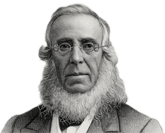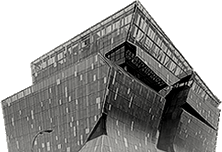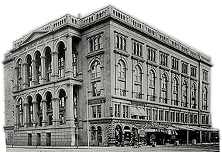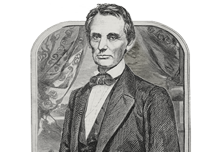Ronny Quevedo A’03
Ronny Quevedo recalls first meeting Jack Whitten when he was a student in The Cooper Union’s Saturday Program, a free art and architecture program for New York City high school students. Quevedo, an artist whose work is in the collections of the Whitney, the Denver Museum of Art, the Baltimore Museum of Art, the Minneapolis Museum of Art, and others, still remembers the day he entered Whitten’s studio on Lispenard Street. He saw Whitten’s canvases and watched as the artist poured layers of paint and later cut them into tiles. This bit of paint alchemy, though, wasn’t all that Whitten demonstrated. He made it clear to all the students there that day that they needed to find a way to support their art, and he talked about his work as a contractor and the need to know several trades.
“He looked at ways of sustaining himself,” Quevedo said. “That really resonated.”
Quevedo, who grew up in the Bronx when his family moved to the US from Guayaquil, Ecuador, saw in Whitten a potential model for becoming an artist, someone with no inherited money who understood the drive to make art and found ways to thrive. While Quevedo attended Cooper as an undergraduate, he worked for The Saturday Program. After graduating, he was a graphic designer at the French Institute’s Alliance Française and an educator at The Studio Museum in Harlem. “I understood education and design were ‘tools’ I could utilize to keep myself engaged in creative work while supporting myself and maintaining a studio practice,” he said.
Exhibited widely in the U.S. and internationally, Quevedo has earned recognition for his ability to merge conceptual depth with a distinct visual style, establishing him as a significant voice in contemporary art. While his overall compositions might appear geometric and orderly, there’s a sense of fluidity and transformation in how the elements interact. Some are reminiscent of gym floors or playing fields, not surprising considering his father, Carlos, was a professional soccer player in Ecuador. Quevedo, who earned his MFA at Yale, uses space to create a dynamic tension between order and dislocation, reflecting themes of displacement and the movement between cultures. Many of his works involve grid-like or rhythmic patterns that evoke traditional weaving techniques and textile arts. Taking inspiration from Whitten’s concept of “compound perspective”—that is, representations of multiple spaces and time periods in one picture plane—Quevedo’s paintings often contain references to mutable cultural identity and migration, with patterns that may resemble woven structures of textiles.
Like Whitten, he often manipulates materials such as fabric, wood, paint, and everyday materials like contact paper in novel ways, exploring the connections among craft, art history, and contemporary life. In many ways, Quevedo’s art can be seen as a meditation on the ongoing process of building and re-building identity, abstract representations of complex personal and cultural stories that explore the intersections of history, identity, and geography.
His work has been exhibited at the Denver Art Museum, the Albright Knox Gallery, the Whitney Museum of American Art, Socrates Sculpture Park, the Queens Museum, and many others. This August the Krannert Museum at the University of Illinois will present an exhibition of his drawings, paintings, and sculpture entitled “Ronny Quevedo: allstar.” On view until December, the exhibition will include a site-specific work, a 12-foot-high step pyramid, which like much of the art being shown, is informed in part by the Krannert’s role as custodian of an extensive collection of pre-Hispanic Andean art.






